Yates Account
Join now
Create a Yates account today!
Sign up to join the Yates Garden Club for monthly e-mails packed with seasonal inspiration, tips for success & exclusive promotions.
Plus if you’re a Garden Club member you can take part in the Yates Growing Community - a blog to share successes, get advice & win prizes in fun challenges along the way!

Forgot password
Enter the email address associated with your account, and we'll email you a new password.

There are so many different types of roses, all of them a delight. If you're thinking about growing them, have a browse through our Types of Roses page for the highlights on each variety.
It's worth visiting your local public rose gardens in spring to smell and admire the blooms, along with a trip to your favourite garden centre to get some fragrant inspiration.
How to Grow Roses in a Garden
Bare-rooted roses (roses supplied without any soil, often packed into plastic bags) arrive in garden centres in time for winter planting, whereas potted roses are often available (and can be planted) throughout the year.
- Choose a sunny spot with well drained soil. Enrich the soil with Yates Dynamic Lifter Organic Plant Food. If the soil is clay-based, add gypsum and fork it in well.
- Dig a hole around 30cm wide and 30cm deep, then create a small mound of soil in the centre of the hole. It's essential that the hole is large enough for the roots to spread out naturally.
- Remove the rose plant from its packaging or pot, remove excess soil and prune off any damaged or broken roots. Then, place the rose on the central mound, carefully spreading and draping the roots evenly around the mound.
- Place a length of wood across the planting hole, so you can confirm the graft union (the 'bumpy bit' where the stem joins onto the rootstock) will be 5cm above the top of the final soil level. Adjust the height if necessary. Backfill the hole with soil and firm it down.
- Water it in well, then mulch with organic mulch, like woodchip or pea straw.
- Once shoots or leafy growth start to appear, feed the rose weekly with Yates Thrive Natural Roses Flowers Plant Food.
- At flowering time, if you cut blooms to enjoy inside your home, it will encourage more blooms. Pinch off spent flowers to prevent fruiting, which keeps the flowers coming.
- In winter, prune roses (see below for pruning tips), remove dead branches and any stems growing inwards. For the first few years, prune to train your rose into an open 'vase' shape, to improve sunlight penetration and air circulation.
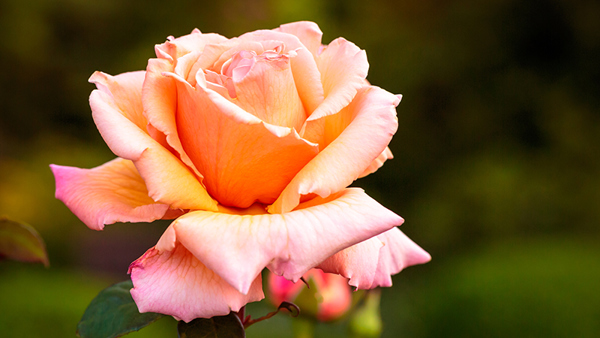
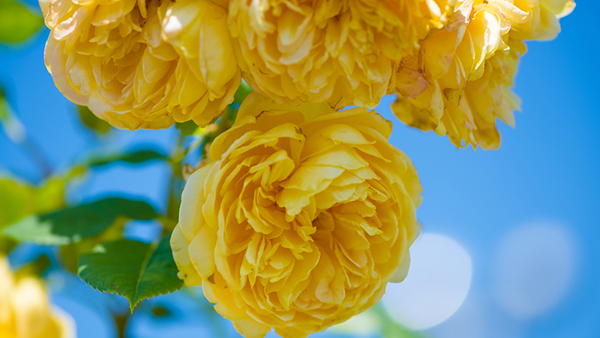
How to Grow Roses in a Pot
You don't need a large space to have a rose garden. Many roses are perfectly suited to growing in pots and will look beautiful on a deck or balcony. One of the many benefits of growing roses in pots is that they can be moved into the spotlight while they're in full bloom.
Bare-rooted roses (roses supplied without any soil, often packed into plastic bags) arrive in garden centres in time for winter planting, but if you miss the winter window, gorgeous potted roses are often available from garden centres (and can be planted throughout the year).
- Choose a pot that's at least 500mm wide and deep (although miniature roses can grow in a smaller pot). Position the pot in full sun.
- Fill with quality potting mix, such as Yates Premium Potting Mix. Remove and/or push soil to the side to create a planting hole. Use the excess soil to create a mound in the centre of the hole.
- Remove the rose plant from its packaging or pot, remove excess soil and prune off any damaged or broken roots. Then, place the rose on the central mound, carefully spreading and draping the roots evenly around the mound.
- Place a length of wood, or a ruler, across the top of the pot, so you can confirm the graft union (the 'bumpy bit' where the stem joins onto the rootstock) will be 5cm above the top of the final soil level. Adjust the height if necessary. Backfill the hole with soil and firm it down.
- Water it in well, then mulch with organic mulch, like woodchip or pea straw.
- Once shoots or leafy growth start to appear, feed the rose weekly with Yates Thrive Natural Roses Flowers Plant Food.
- At flowering time, if you cut blooms to enjoy inside your home it will help encourage more blooms. Remove spent flowers to keep them coming.
- In winter, prune roses (see below for pruning tips), remove dead branches and any stems growing inwards. For the first few years, prune to train your rose into an open 'vase' shape, to improve sunlight penetration and air circulation.
- Roses have extensive root systems, so it’s ideal to re-pot every couple of years into a larger pot, to prevent them becoming root-bound.
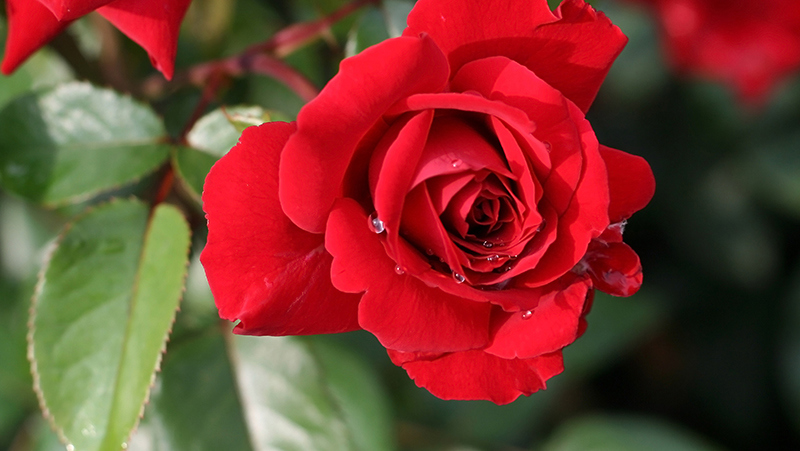
Rose Growing Tips
- Plan ahead to plant bare-rooted roses in winter. To get your first choice variety, you might need to pre-order it earlier; talk to your favourite garden centre about the options. At other times of the year, choose potted roses.
- When buying bare-rooted roses, check that the stems are smooth and free from wrinkling. Stems can vary from bright green to reddish brown in colour.
- Before planting bare-rooted roses, soak the roots in a bucket of water and seaweed tonic, to hydrate them and remove traces of soil.
- Don’t buy bare-rooted rose plants until you're ready to plant; they need to go into the ground promptly.
- Maintain a layer of organic mulch at the base of the plant to help conserve moisture (make sure the mulch doesn't touch the stem, leave a gap of a few centimetres in between).
- Feed roses each week with Yates Thrive Roses & Flowers Liquid Plant Food from spring to autumn, to keep them healthy and flourishing.
- To reduce the risk of disease, water roses in the morning. Water around the base of the plant, rather than over the foliage.
- For established roses, 'dress' the soil with Yates Dynamic Lifter Organic Plant Food in spring, summer and autumn.
- Try to remove spent/dead flowers as soon as you notice them. This prevents the plant from fruiting and encourages new flowers. If you want to harvest rose-hips, skip this step.
- If you notice any leggy growth or wayward stems, trim them off so the plant maintains a nice shape.
- Newly-planted hybrid tea and floribunda roses are pruned over their first few years to train them into an open 'cup' shape of woody stems.

Floribunda 'Iceberg' rose
Rose Pruning Tips
- Roses flower better when they're hard-pruned each year. Old growth doesn't flower as prolifically as new growth.
- Rose plants remain healthier when dead and diseased growth is removed, due to having less pests and diseases to fend off.
- In general, roses look neater and tidier when they're kept smaller, because they have more fresh growth visible.
- Prune off stems and branches that are dead, diseased or damaged.
- Prune any stems or branches that are crossing over each other, or rubbing together.
- Prune Hybrid Tea and Floribunda Roses in the depths of winter, cutting them back to around knee height. After you've removed dead wood, the live stems that are left will be 1-3 years old. Shorten these stems back to a strong bud - these buds will sprout new lateral stems, that deliver the spring blooms. Never shorten stems by more than 1/3 at a time.
- Cut stems at a 45° angle so rainwater doesn't pool on the surface of the cut.
- Shorten stems down to just above an outward-facing bud. Refer to our How to Prune Your Roses page for more details and a visual guide.
- Immediately after pruning, spray with Yates Lime Sulfur to clean up any pests and diseases - this gives the roses a fresh start to the new season.
- Shrub Roses are modern Hybrid Tea or Floribunda cultivars crossed with wild Species Roses. They take after the wild side of the family, so don't need much pruning, other than getting rid of spindly or weak growth.

Shrub Rose 'Emily Brontë'
- Prune Old Garden roses very lightly. This group includes Species, Old European, Tea and China roses. Remove dead wood each year in winter, but when you shorten the stems back to a strong bud, make certain you don't cut them back by more than 1/4 at a time. When in doubt, you can get away with skipping the winter prune for a year and simply deadheading the spent flowers.
- Repeat-flowering Climbing Roses are pruned during winter dormancy, a little harder than most rose types. Thin out dead wood, then shorten the live lateral stems, only retaining 3 buds on each.
- Once-flowering Climbers don't respond well to severe pruning, so just take out the dead canes, don't shorten the stems.
- Rambling Roses need to be pruned right back to the ground straight after flowering, so new canes can grow up again next season (Ramblers need to be re-trained every year).
- Give 'remontant' (repeat-flowering) rose bushes a light prune in summer to encourage a second flush of blooms in autumn. Remove dead flowers, dead or diseased stems and shorten live stems by one-third. After pruning, feed well with Yates Thrive Roses & Flowers Liquid Plant Food.
- We recommend removing rose hips (fruits), as they drain energy from the plant and inhibit the growth of more flowers.
- If you spot any pests or diseases while pruning, destroy the rose clippings by burning them, or dispose of them in 'green bin' garden waste - don't put the clippings in your compost.

Pruning Tool Tips
- Sharpen your pruning tools. The sharper the blade is, the smoother the cut will be. Having a smooth cut will reduce the chances of infection by diseases.
- Disinfect your tool with a 9:1 mixture of water (9 parts) and bleach (1 part). This is encouraged for plants that have previously suffered from diseases.
Rose Troubleshooting Tips
- Prune and remove any black spot affected leaves from the plant and on the ground. Spray the bush thoroughly with a fungicide, like Yates Rose Gun, to help control the disease and stop the spread.
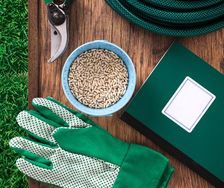
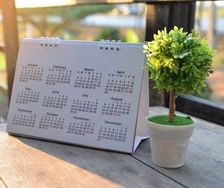
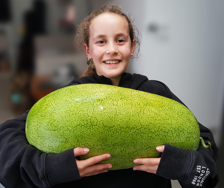




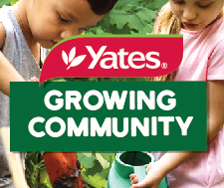










Share
Share this article on social media